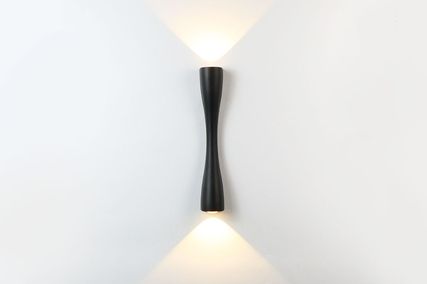ENCYCLOPEDIA OF VERNACULAR
ARCHITECTURE OF THE WORLD
Edited by Paul Oliver, Cambridge
University Press, $1495 (three volumes).
Put off leasing the new Saab for a month
because this phenomenal package of
scholarship mustgo in the library-and the
current price is said to be introductory. The
three volumes, each about 1600 mono
pages, are unlikely to be read but will be
plundered for research and inspiration.
Immaculate typography (those Brits really
know how) is supplemented by superb
sketches of primitive construction details
and helpful amateur snaps of an amazing
diversity of village structures. These are
bound to inspire practitioners looking for
primal scenarios. Volume 1 gives the
overview, with essays on concepts, systems
and building types, uses of symbolism and
decoration, and the planet’s stocks of
construction materials. Volume 2 covers the
vernacular traditions of Europe, Asia and
Australasia, with Australians Paul Memmot,
Don Watson, Ian Sinnamon and Miles Lewis
(plus others) reporting on the approaches of
specific Aboriginal tribes and early migrants.
Volume 3 explores Africa and the Americas.
Although bits and pieces are sure to be
contested, it’s a mighty achievement.
HARRY SEIDLER:
SELECTED AND CURRENT WORKS
Master Architects Series III, edited by
Stephen Dobney, Images Publishing and
Craftsman House, $85.
Australia’s most important post-war architect
is celebrating his 75th year with this 255-
page monograph of his outstanding oeuvre
of office towers and houses, harking way
back to a 1947 model for confidently cubic
domestic additions in Toronto (a project
apparently conceived while he was assisting
Marcel Breuer in New York). Clearly
presented and generously illustrated, this is
the most complete pictorial record of the
maestro’s designs and buildings-so it’s
thoroughly recommended for study. Be
aware, however, that the ‘Master Architects’
series is supported substantially by the offices documented, so the subjects tend to
influence the editing. This may explain some
minor weaknesses. First, the cover image, a
bitumen-edged aerial of the exemplary QV1
plaza in Perth, looks dowdy and confusing: it
seems to be intended not to seduce buyers
but to remind them that Seidler cando
ground levels. Second, the warm essay by
London writer Dennis Sharp won’t get the
cranium buzzing; it’s a lost opportunity to
demonstrate the “criticism” which Seidler
says is non-existent in Australia. More
worrying are some reports on unbuilt
projects which inaccurately suggest that
they are going ahead. Eg, why are readers
told that the Melbourne (Grollo) Tower is all-go
for completion in 2000, when we know
(in Australia) that the developers dropped the
Seidler design 18 months ago and are
pursuing a Denton Corker Marshall scheme?
Apart from these worries, the book is a fine
tribute to an architect whose productions
deserve nothing less.
| THE SHAPING OF NOOSA
By Michael Gloster, Noosa Blue
Publishing Group, $30.
Architect and environmental activist Michael
Gloster has written a shamelessly biased
and seductively illustrated history of the
Noosa development battles. He explains how
successive Shire councils, based inland at
Pomona, actively encouraged coastal and
canal subdivisions to raise rates for road-building-
a successfully destructive strategy
until Gloster, Noel Playford and other
ecologically astute citizens won the council
elections of 1982. Although the greenies lost
next time, later councils have been much
more careful-and Noosa now has a law to
cap its population at a ‘sustainable’ 50,000.
This must maximise land values and rental
returns, so the shire economy wins too.
ARCHITECTURAL MONOGRAPHS
NO 50: TOM KOVAC
Editor Maggie Toy, Academy
Editions, $60.
To imagine the ethereal architecture of
Slovenia-born Melburnian Tom Kovac, think of Kate Bush swirling and swooping in a
white (not gothic black) gown. Do you read
such a performance as “dementia” (like Dale
Jones-Evans in an AA article several years
ago) or allude, like both the artists, to “serenity”?
In this London-published, RMIT supported
book about one of our most provocative
practitioners, five critics analyse Kovac’s
portfolio of 19 commercial interiors and
house designs since 1990. In general,
writers Leon van Schaik, Aaron Betsky, John
Andrews, Peter King and Georgi Stanishev
appreciate his sculpting of amorphously
contoured forms and spaces. Andrews says
these relate both to “primitive carved space”
(not mentioning messy wombs, you’ll notice)
and 20th century minimalism. On the other
hand, these scholars avoid admiring the
costume styling connotations of fluidly
draping thin boards over studwork that’s as
complex, rigid and secret as Victorian
corsetry. While Gehry, Hadid, Coates and the
LA coterie have long been working the
stucco-ply method, their compositions have
given theory-traders more to digest than
Kovac’s exortation, aligned to the Calvin
Klein fragrance slogan: Just Be. ARCHITECTURAL DESIGN: NEW
SCIENCE = NEW ARCHITECTURE?
Guest editor Charles Jencks, editor
Maggie Toy, Academy Editions, $52.
No, he did not sink in the mire of post
modernism: Charles Jencks is back on deck
to escort us through post-deconstructivism.
Following his 1996 primer, The Architecture
of the Jumping Universe, he showcases here
some new-age projects inspired by chaos
physics, non-linear geometries and the
maths of random behaviour. While no-one
knows if or how those notions will shake
together as a Theory of Everything, the
boffins have divined enough fascinating
propositions to keep cluey architects firing
for at least the next half-century. Australia’s
contribution is Ashton Raggatt McDougall’s
RMIT Storey Hall, partly inspired by Roger
Penrose’s periodic tiling systems. Ironically,
the Penrose formulae are already being
critted as not random enough!- DJ.
|















